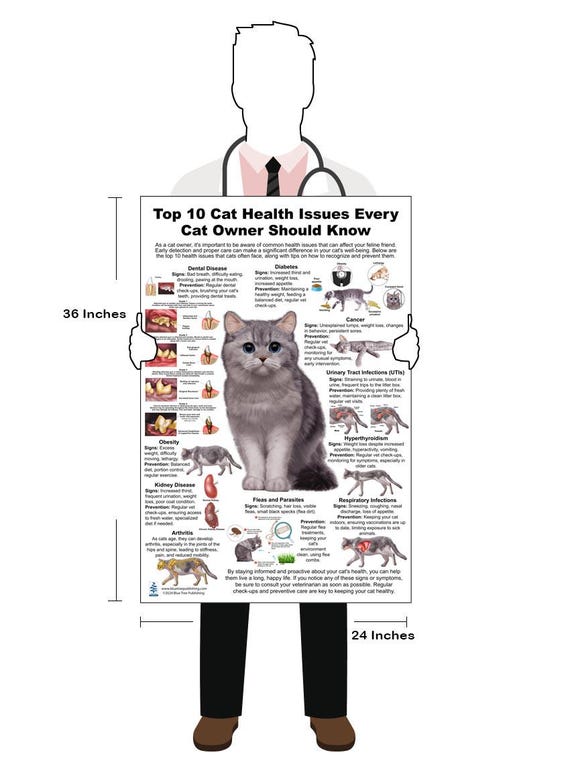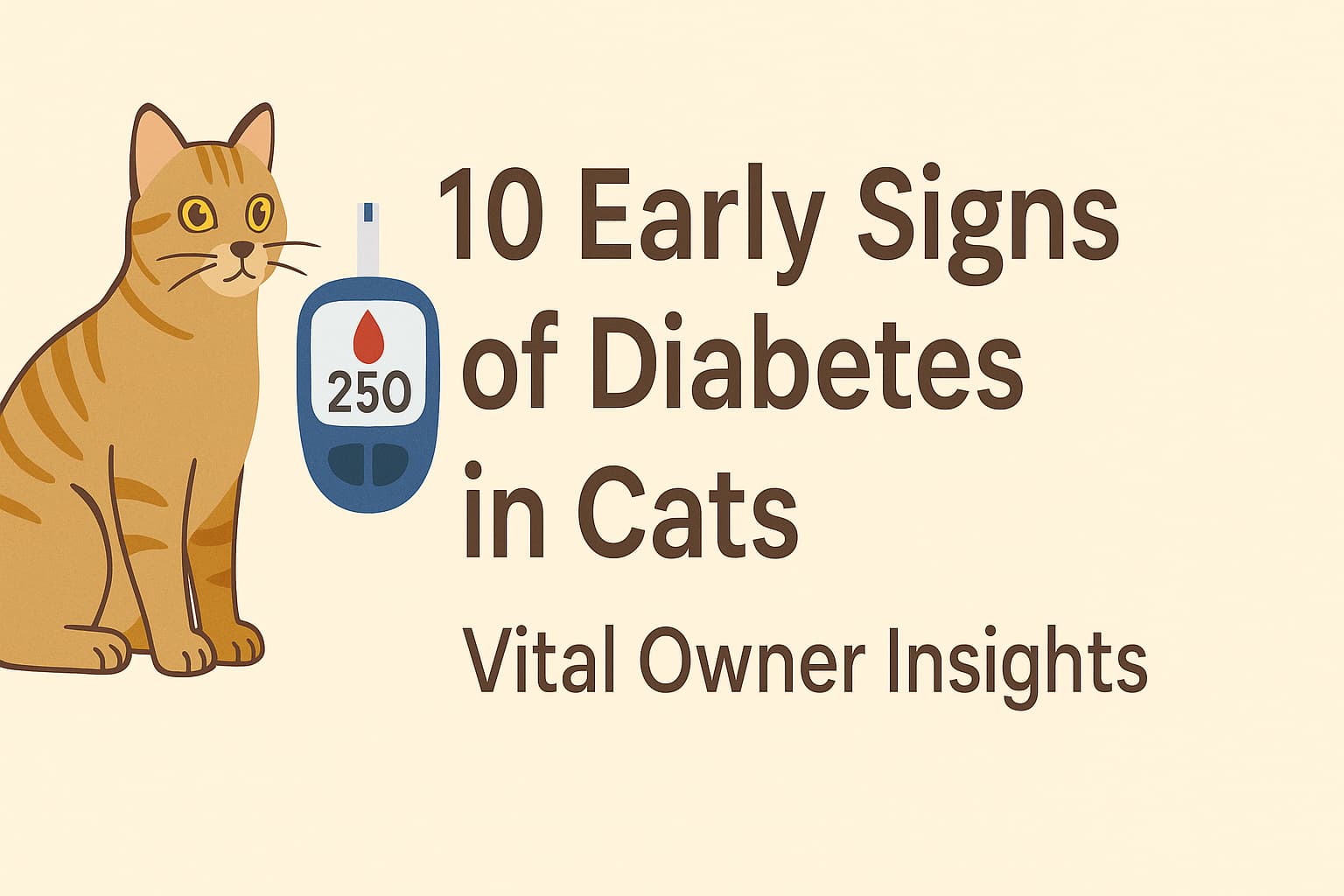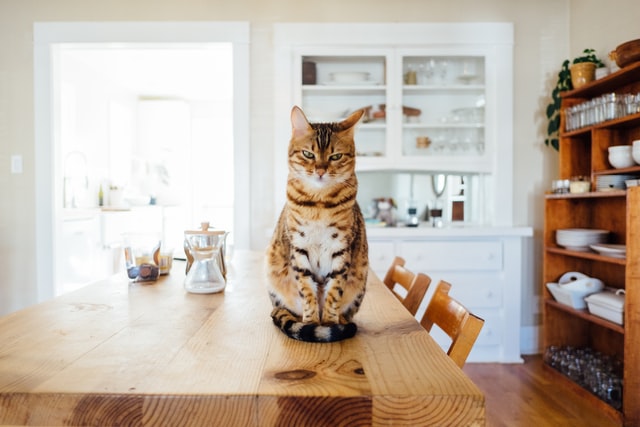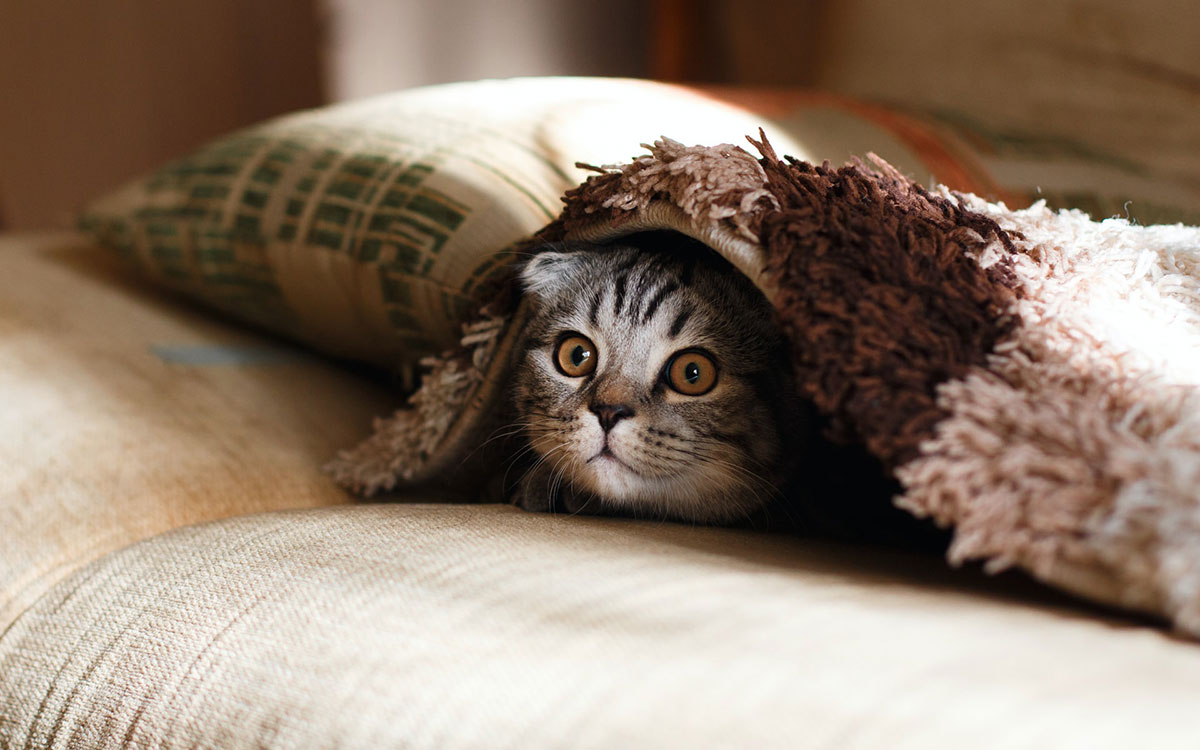Cats can develop diabetes, just like humans. It’s important to catch it early.
This can help manage the condition better and improve your cat’s life. Diabetes in cats is more common than many think. It often goes unnoticed until it’s severe. Cats are experts at hiding illness. Recognizing early signs can make a huge difference.
Many cat owners are unaware of what to look for. Subtle changes in behavior or health may indicate a problem. Early detection can lead to better treatment outcomes. This guide will highlight key signs to watch for. Being informed helps you act quickly. Your cat’s health and happiness depend on it. Stay tuned to learn about these signs. Your furry friend’s well-being could be at stake.

Credit: bluetreepublishing.com
Increased Thirst
Have you noticed your cat drinking more water than usual? This increased thirst could be an early sign of diabetes. Understanding such changes is crucial for your cat’s health.
Cats can experience health issues, just like humans. Diabetes is one condition that affects them. A key sign of diabetes in cats is increased thirst. If your cat starts drinking more water, it could be an early sign of diabetes. Understanding this symptom is crucial for your cat’s health. Spotting unusual drinking habits early can lead to timely treatment.
Unusual Drinking Habits
Changes in your cat’s drinking habits can be subtle. You may notice your cat visiting the water bowl more often. Sometimes, they seek water from unusual places, like the sink or toilet. Keep an eye on their behavior. It’s important to note any changes. Record how much water they consume daily. It helps your vet diagnose the issue.
Causes Of Excessive Thirst
Excessive thirst in cats can stem from various causes. Diabetes is a significant reason. It makes your cat’s body unable to process sugars correctly. This leads to higher blood sugar levels. As a result, your cat feels more thirsty. Another cause is kidney disease. It also leads to increased water intake. Stress or changes in diet can affect thirst, too. Always consult a vet for a precise diagnosis. Early detection can prevent complications.
Frequent Urination
Cats with diabetes often show early signs like frequent urination. This symptom might indicate high blood sugar levels. Watch for this and other changes in your cat’s habits.
Frequent urination in cats can be a subtle yet vital indicator of diabetes. If you’ve noticed your feline friend making more trips to the litter box, it might be time to look closer. Increased urination is one of the most common early signs of diabetes in cats, and catching it early can make a significant difference in their health.
Changes In Litter Box Usage
A cat with diabetes may start using the litter box more often. You might find yourself scooping more clumps than usual. Pay attention if your cat is urinating outside the box or the litter seems wetter. These changes can be frustrating, but they are crucial signals. They allow you to detect potential health issues early. If you notice these signs, a vet visit should be your next step.
Link To Kidney Function
Frequent urination in diabetic cats is closely linked to kidney function. When blood sugar levels are high, the kidneys work overtime to filter the excess glucose. This leads to increased urine production. Consider how this affects your cat’s overall health. Excessive urination can lead to dehydration. Dehydration, in turn, can cause further complications if left unchecked. Could your cat’s frequent urination be a sign of something more? It’s essential to remain vigilant and responsive to these subtle changes. Early detection and intervention can make managing diabetes much smoother for you and your furry companion.
Weight Loss
As a cat owner, noticing your feline friend’s sudden weight loss can be concerning. Cats often hide symptoms of illness, making it crucial to recognize the early signs of diabetes. Weight loss in cats with diabetes is not just about losing fat; it’s a more complex issue that needs your attention.
Unexpected Slimming
Has your cat been shedding pounds without any changes in diet or exercise routine? This unexpected slimming is often one of the first signs of diabetes. You might notice your cat appearing thinner despite eating normally or even more than usual. This can be puzzling, but it signals that something might be wrong.
As your cat loses weight, you might feel its ribs and spine more prominently. This physical change can be alarming, especially if it’s not on a diet. Keep an eye on its eating habits and overall energy levels. A visit to the vet might be necessary to rule out diabetes.
Metabolic Impacts
Diabetes significantly affects your cat’s metabolism, leading to weight loss. When the body can’t use glucose properly, it starts breaking down fat and muscle for energy. This metabolic shift results in weight loss and can make your cat feel weak.
Consider how this metabolic change might affect your cat’s daily life. Are they less active or seem tired more often? This lethargy, coupled with weight loss, can paint a clearer picture of a potential health issue. Pay attention to these subtle shifts in behavior.
Imagine your cat’s body like a factory suddenly using its fuel inefficiently. This inefficiency demands more from your cat, causing it to lose weight even if it’s eating well. It’s a process that can be hard to spot but crucial to address.
If you notice these signs, it might be time to consult with your vet. Prompt action can make a difference in managing diabetes and keeping your cat healthy. Don’t wait for more obvious symptoms to appear; your vigilance can lead to early diagnosis and better outcomes.

Credit: www.etsy.com
Increased Appetite
Is your cat suddenly raiding the food bowl with an insatiable hunger? An increased appetite can be one of the early signs of diabetes in cats. As a cat owner, you might notice your feline friend demanding more food than usual, leading you to question whether it’s a growth spurt or something more serious. Understanding the reasons behind this behavior can help you take timely action.
Constant Hunger
Have you ever found yourself refilling the food dish more often than before? This constant hunger might indicate that your cat’s body struggles to regulate its blood sugar levels. Cats with diabetes usually experience a lack of energy in their cells despite consuming sufficient food. This can lead to persistent hunger as their bodies attempt to compensate for the energy deficit.
Reflecting on my experience, my cat woke me up at odd hours for more food. It wasn’t just the typical meow; it was an urgent plea. This was one of the first red flags that prompted a vet visit. Have you noticed similar behavior in your cat?
Nutritional Imbalance
Another aspect of increased appetite in diabetic cats is nutritional imbalance. When the body fails to use glucose properly, it may signal the need for more food to try and balance out essential nutrients. This can lead to overeating and weight gain, which further complicates diabetes management.
It’s crucial to assess your cat’s diet and consult a vet to ensure they receive the proper nutrients without excess calories. Could adjusting the nutritional content of your cat’s meals make a difference?
Maintaining a well-balanced diet helps manage diabetes symptoms and supports overall health. Tracking your cat’s eating habits and responding to changes can be pivotal in catching diabetes early.
As a responsible pet owner, observing your cat’s appetite and making informed decisions about their diet can make a significant difference. Are you ready to take control of your feline’s health?
Lethargy And Weakness
As a cat owner, you naturally want the best for your furry friend. But what if subtle signs of diabetes are creeping in without you noticing? Lethargy and weakness can indicate something wrong with your cat’s health. Recognizing these signs early can make a significant difference in managing their condition and ensuring they lead a healthy, happy life.
Signs Of Fatigue
Have you noticed your cat sleeping more than usual or seeming less interested in their favorite toys? Cats are known for their naps, but an increased sleep or a lack of enthusiasm can signal fatigue. This tiredness might not just be due to age; it could be a red flag for diabetes.
Fatigue in cats manifests as a reduced willingness to move around or play. Your once playful kitty might now prefer to rest, even when you try to engage them with a feather toy or laser pointer. Observing these changes and considering if they might be symptoms of a more significant issue is essential.
Energy Level Decline
Does your cat seem less energetic than before? A noticeable drop in energy levels can be alarming. It’s like watching a usually vibrant performer suddenly forget their routine.
Energy changes can be subtle. Your cat might no longer greet you at the door with enthusiasm or skip its regular rounds of the house. These small shifts, when pieced together, can signal a bigger health concern.
Imagine your cat as a battery slowly losing charge. If they’re not recharging with rest, it might be time to seek a vet’s advice. Observing these signs early allows for timely intervention, potentially saving your cat from further discomfort.
As a caring owner, it’s important to stay vigilant. Would you recognize if your cat’s energy levels were changing? Keeping an eye out for lethargy and weakness can empower you to provide the best care for your feline friend.
Poor Coat Condition
As a cat owner, you’re likely familiar with the luxurious feel of your feline friend’s coat. However, a noticeable decline in your cat’s coat condition might be more than just a cosmetic issue—it could be an early sign of diabetes. A healthy cat typically sports a shiny and smooth coat. If you’re observing a dull or unkempt appearance, it might be time to pay closer attention.
Dull Fur Appearance
Have you noticed your cat’s fur losing its shine? Cats with diabetes often display a dull coat that might seem less vibrant than it used to be. This isn’t just a grooming issue; it reflects your cat’s internal health.
Diabetes can affect your cat’s ability to absorb essential nutrients. This, in turn, impacts their fur’s health, making it lackluster. It’s as if your cat is signaling a need for help through their dull coat.
Skin Health Concerns
Alongside a dull coat, skin issues may arise. Your cat might have dry, flaky patches or even redness on its skin. These symptoms suggest your cat’s body struggles to maintain proper hydration and nutrition.
Diabetic cats can experience poor circulation and immune function, which can lead to difficult-to-heal skin problems. It’s crucial to monitor these signs, as they could indicate underlying diabetes.
Have you ever run your fingers through your cat’s fur and felt a rough patch? This could be a sign that something isn’t right internally. Regular vet check-ups can help you catch such issues early and manage your cat’s health more effectively.
Consider how often you groom your cat. Regular grooming isn’t just about keeping your cat looking good. It’s a time to check for signs of poor coat condition and skin health. If you notice changes, it might be time to consult your veterinarian.
Are you noticing these signs in your cat? Please don’t ignore them. Early detection is key to managing diabetes effectively. You can ensure your feline friend stays healthy and happy by staying attentive to these subtle changes.
Vomiting And Nausea
Vomiting and nausea in cats might indicate diabetes. Owners should observe these symptoms, as they could signal early diabetes. Understanding your cat’s health helps you seek timely veterinary advice.
Vomiting and nausea in cats can signal underlying health issues. Diabetes often affects a cat’s digestive system. Many cats with diabetes experience frequent vomiting, which can cause distress for both the cat and the owner. Recognizing these signs early is crucial. It helps manage the condition effectively.
Digestive Disturbances
Diabetes disrupts normal digestion in cats. Insulin imbalance is a common cause. This imbalance affects food processing in their stomachs. Vomiting occurs when food isn’t properly digested. Nausea is another symptom of digestive issues. Cats may refuse to eat due to feeling unwell. Lack of appetite can lead to weight loss. Monitoring your cat’s eating habits is essential. It provides clues about their health.
When To Seek Help
Frequent vomiting needs veterinary attention. It may indicate serious health problems. Nausea lasting more than a day is concerning. A veterinarian can assess your cat’s condition. Early intervention is key in diabetes management. Regular check-ups ensure your cat stays healthy. Watch for other signs like lethargy or increased thirst. These may accompany vomiting and nausea. Always consult a vet for any health concerns.
Behavioral Changes
Cats may show early signs of diabetes through behavioral changes. Increased thirst, frequent urination, and lethargy can indicate health issues. Observing unusual behavior helps identify potential diabetes.
Recognizing behavioral changes in your cat can be vital in identifying early signs of diabetes. Cats are naturally independent creatures, but any noticeable shift in their behavior could signal that something isn’t quite right. As an owner, understanding these changes can help you take swift action, ensuring your furry friend’s health and happiness.
Altered Interactions
Has your cat been acting differently around you lately? If your once sociable feline suddenly prefers solitude, it might be time to pay attention. Cats with diabetes often experience fatigue and mood swings, leading them to withdraw from family interactions. I remember when my cat, Whiskers, who was always eager to greet me at the door, started hiding under the bed instead. It was a stark change that made me realize something was amiss. Such altered interactions can indicate your cat is feeling unwell. A decreased playfulness or reluctance to engage with their favorite toys can also point to discomfort. Notice if your cat seems less interested in cuddling or interacting with other pets. These subtle signs shouldn’t be overlooked.
Signs Of Discomfort
Is your cat more vocal than usual, perhaps meowing excessively for no apparent reason? This could be a sign of discomfort or pain, which is common in diabetic cats. Increased vocalization often signals that your cat is trying to communicate their distress. Observe any changes in their grooming habits. Cats in discomfort may neglect grooming or over-groom certain areas due to irritation. Please pay attention to any unusual licking or biting of their fur. Another telltale sign is a change in sleeping patterns. If your cat is sleeping more than usual or in unusual positions, it might be a response to discomfort or fatigue linked to diabetes. These small changes can be easy to miss, but they hold significant clues to your cat’s health. Have you noticed any of these behavioral changes in your cat? Taking proactive steps can make all the difference in managing their health. Always consult with your veterinarian if you’re concerned about these symptoms. Your attentiveness could be the key to catching diabetes early and keeping your cat healthy.
Hind Leg Weakness
As a cat owner, you might notice subtle changes in your feline friend that suggest something isn’t quite right. One of the early signs of diabetes in cats, which can easily be overlooked, is hind leg weakness. This can manifest as difficulty in movement and may point to a more serious underlying issue. Let’s dive into what this means for your cat and why paying attention is crucial.
Difficulty In Movement
If your cat suddenly struggles to jump onto their favorite perch or has trouble climbing stairs, you might be witnessing one of the early indicators of diabetes. Cats are naturally agile creatures, so any change in their usual spryness warrants a closer look. As a cat owner, you may recall when your pet was energized, effortlessly navigating your home. If those days are fading, it’s worth considering a veterinary check-up.
These difficulties can be a sign that their hind legs are weakening. This weakness often starts slowly, making it easy to dismiss as aging or laziness. However, monitoring such changes can help you catch diabetes early, preventing further complications.
Link To Neuropathy
Hind leg weakness in cats can be linked to a condition known as diabetic neuropathy. This condition affects the nerves, particularly in the hind legs, causing weakness or paralysis. Imagine your cat’s frustration when unable to chase after a toy or climb their favorite scratching post. Neuropathy is not just a physical issue; it can also lead to emotional distress for your pet.
Neuropathy is directly related to high blood sugar levels damaging the nerves. The longer diabetes goes unchecked, the more severe these symptoms can become. Are you noticing your cat dragging their hind legs or walking flat-footed? It’s essential to consult your vet as these could be signs of neuropathy due to diabetes.
Taking action early can significantly improve your cat’s quality of life. Have you considered how proactive measures, such as dietary changes and medication, could help manage diabetes and improve your cat’s mobility? Addressing these signs early will not only prevent further deterioration but also help your pet regain its vitality.
Vision Problems
Cats with diabetes may show vision problems. Owners should watch for squinting, bumping into objects, or cloudy eyes. These signs can help identify diabetes early.
Cats are naturally curious and agile creatures, often seen gracefully leaping from one spot to another. However, diabetes can sneak up on our feline friends, sometimes manifesting in subtle ways like vision problems. If you’ve noticed your cat acting differently, bumping into furniture, or hesitating before jumping, it might be time to consider their eye health.
Cloudy Eyes
Cloudy eyes in cats can be a telltale sign of diabetes. This condition, known as cataracts, occurs when the eye’s lens becomes opaque, hindering your cat’s vision. Imagine looking through a frosted window, everything seems blurry and unclear. If your cat’s eyes appear cloudy, it could struggle to see its surroundings. Regularly check their eyes for any changes; early detection can make a significant difference. Taking your cat to the vet for regular check-ups can ensure that any potential issues are caught early.
Impact On Mobility
You might notice that your once sprightly cat is now more hesitant to move around. Vision problems can severely impact a cat’s mobility. They might become cautious, reluctant to explore their usual territory, or even avoid jumping to their favorite spots. A friend’s cat, Whiskers, started missing her jumps, and it was discovered she had vision issues due to diabetes. Addressing these issues helped her regain some confidence. Have you noticed your cat’s movements changing? It’s crucial to observe these behaviors and understand their significance. A cat with vision problems might need extra help navigating its environment, like using nightlights or keeping pathways clear. What adjustments can you make to help your cat feel more secure? These small changes can significantly improve their quality of life. Regular vet visits and a close eye on their behavior will ensure your feline friend remains healthy and happy.

Credit: www.etsy.com
Frequently Asked Questions
What Are One Of The First Signs Of Diabetes In Cats?
One of the first signs of diabetes in cats is increased thirst and urination. Cats may drink more water than usual, and frequent urination can accompany this behavior, indicating potential diabetes. Observing changes in appetite or weight can also help identify early signs.
Always consult a vet for accurate diagnosis and treatment.
How Do Cats Act When Their Sugar Is High?
Cats with high blood sugar may show increased thirst and urination, appear lethargic, or have a decreased appetite. Sudden weight loss can occur despite normal eating habits. Seek veterinary advice if symptoms persist. Prompt attention helps manage their health effectively.
Can I Check My Cat For Diabetes At Home?
You can check your cat for diabetes at home using urine glucose test strips. Monitor symptoms like excessive thirst, frequent urination, and weight loss. Consult a vet for accurate diagnosis and treatment. Regular vet check-ups are essential for managing your cat’s health effectively.
What Can Mimic Diabetes In Cats?
Hyperthyroidism, pancreatitis, and certain medications can mimic diabetes symptoms in cats. These conditions can cause increased thirst and urination. Regular vet check-ups are essential for accurate diagnosis and treatment. Always consult your veterinarian if you notice any unusual symptoms in your cat.
Proper diagnosis ensures effective management and care.
Conclusion
Recognizing early signs of diabetes in cats can save lives. Symptoms like increased thirst or weight loss need attention. Talk to your vet if you notice any changes. Early detection helps manage diabetes effectively. Keep an eye on your cat’s habits and health.
Regular check-ups are crucial. Stay informed and proactive. Your cat’s well-being is in your hands. Prioritize their health to ensure a happy life. Understanding these signs can make a difference. Be vigilant and provide the best care possible. A healthy cat is a happy cat.






